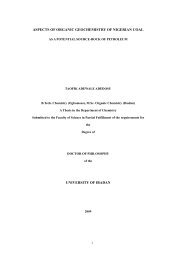aspects of organic geochemistry of nigerian coal university of ibadan
aspects of organic geochemistry of nigerian coal university of ibadan
aspects of organic geochemistry of nigerian coal university of ibadan
You also want an ePaper? Increase the reach of your titles
YUMPU automatically turns print PDFs into web optimized ePapers that Google loves.
1.6.2 Quality <strong>of</strong> Organic matter<br />
The quality <strong>of</strong> <strong>organic</strong> matter contained in rocks can be determined by<br />
Optical and Physiochemical methods. These methods are briefly described<br />
below:<br />
1.6.2.1 Optical Methods<br />
These methods are based on maceral recognition techniques. Maceral<br />
examination can be carried out using reflected light microscopy <strong>of</strong> thin sections<br />
<strong>of</strong> the whole rock or <strong>of</strong> isolated <strong>organic</strong> particles. Transmitted light microscopy<br />
can also be used for isolated maceral concentrates. Shape and degree <strong>of</strong><br />
transmittance or reflectance, and also fluorescence under uv-illumination, can be<br />
used to identify broad maceral groups (liptinite, exinite, vitrinite and inertinite).<br />
1.6.2.2 Physico-chemical Methods<br />
Kerogen is the disseminated <strong>organic</strong> matter in sedimentary rock that is<br />
insoluble in non-oxidizing acids, bases and <strong>organic</strong> solvents. Elemental analysis<br />
<strong>of</strong> kerogen concentrate from rock is the most reliable method <strong>of</strong> characterizing<br />
the types or quality <strong>of</strong> <strong>organic</strong> matter. It is based on the major constituents (C, H,<br />
O), which have been used to define main types <strong>of</strong> kerogen based on the plot <strong>of</strong><br />
H/C versus O/C in Van Krevelen diagram. The plot <strong>of</strong> Hydrogen index (HI) vs.<br />
Oxygen index (OI) provides an analogue to the van Krevelen diagram. Both the<br />
HI and OI can be obtained from Rock-Eval pyrolysis. Based on the plot <strong>of</strong> H/C<br />
vs. O/C and HI vs. OI, kerogen can be classified into types I to IV which are<br />
broadly equivalent to the maceral groups, liptinite, exinite, vitrinite and inertinite<br />
respectively for <strong>coal</strong>s (Killops and Killops, 1993).<br />
Type I kerogen has a high H/C ratio and a low O/C ratio. It contains a<br />
significant contribution from lipid material. Algal material and bacteria remains<br />
are the main contributors <strong>of</strong> its <strong>organic</strong> matter. The kerogen is deposited under<br />
anoxic conditions in shallow water environment (e.g. Lagoon and Lake) with<br />
total 4.6% oxygen. The type I kerogen is relatively rare but has high oil potential.<br />
26


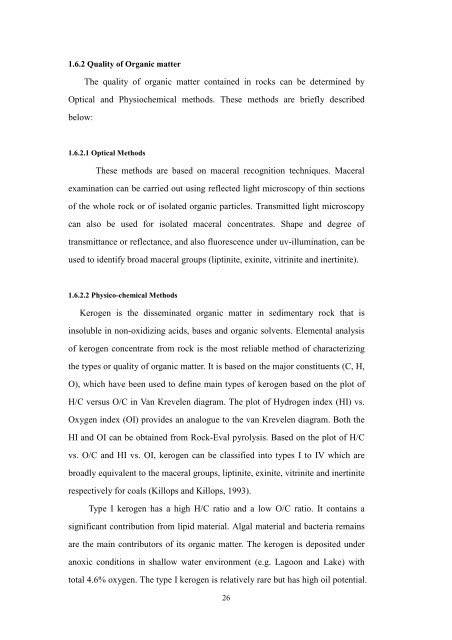

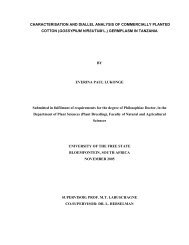


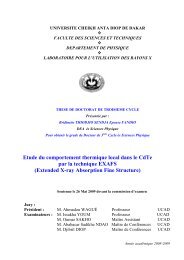
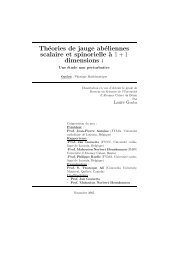
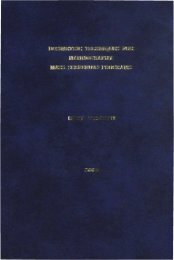

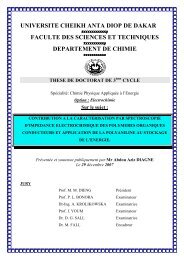
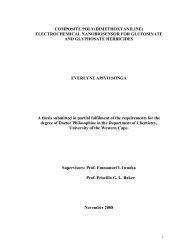


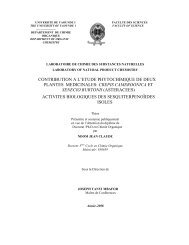
![SYNTHESIS AND ANTI-HIV ACTIVITY OF [d4U]-SPACER-[HI-236 ...](https://img.yumpu.com/30883288/1/190x245/synthesis-and-anti-hiv-activity-of-d4u-spacer-hi-236-.jpg?quality=85)
